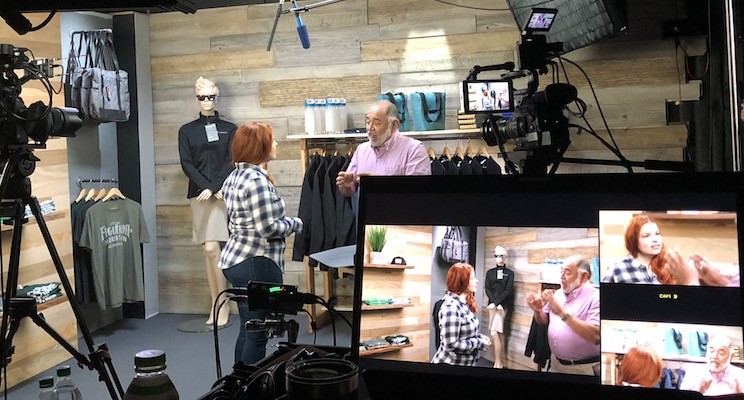Note: This post originally appeared on LinkedIn.
One of the great things about training videos is the scenes where actors play out a customer service scenario.
It helps provide viewers with a more concrete example of concepts being shared.
A common complaint for many training videos is the scenes are unrealistic and cheesy. I've seen plenty of those myself, so this is always in the back of my mind as I work with film producers at LinkedIn Learning to create scenes for my training videos.
Here's how I create scenes for my courses.
Step 1: Start With Something Real
My scenes are based on situations that have really happened.
I like to think of examples that highlight the concept I'm trying to share. It could be from my own experience as a customer, the many jobs I've had serving customers, or a story someone else shared with me.
For a segment on identifying customers' emotional needs, I thought back to the time I was a customer service manager for a catalog company that sold collectibles. Some of the angriest customers were people who ordered something as a gift, only to receive an item that was different than what was expected.
So for this movie, I wrote a brief dialogue based on that experience.
[scene: A contact center employee is talking on the phone with a customer. The customer becomes angry when the employee offers to do an exchange.]
Employee: "I'm so sorry to hear we sent the wrong item. I'd be happy to help you do an exchange and send out the color you ordered."
Customer: An exchange?! I was supposed to give it as a gift tonight. I can't do anything with this!
[end scene]
Here's what it looks like on film (the scene starts at :31):
Step 2: Pick a Setting
The setting for a scene can have a tremendous influence on its authenticity.
Here I start with a few general ideas and then share them with my producer at LinkedIn Learning. The producer works with the production team to create the right set, cast the scene, and ensure everything can be filmed on time and on budget, so there's a lot of collaboration at this point.
Sometimes, my ideas are easy to execute. The contact center set used in the video above was the same one used for my course, Phone-Based Customer Service. (Fast forward to 2:11 of this video and you'll see the same set, shot from a slightly different angle.)
Other times, the producer will make some suggestions to find a setting that's easier to build or perhaps will show up better on video.
I originally wanted to do a scene at a movie theater snack bar for my course on Working with Upset Customers, because I had seen a customer get unreasonably angry in that setting. The producer I was working with suggested a coffee shop setting instead, because that set was already built.
It was a great suggestion, especially because I've seen people lose it in coffee shops, too! Here's a video using that set (the scene starts at :59):
Notice the video also focuses on emotional needs, but the scenario is different than the first video I showed you. There are often overlapping topics between my courses, so I try to put a slightly different spin on it each time.
Step 3: Cast the Scene
Good acting can make or break the authenticity of a training video scene.
This step is almost entirely in the hands of the producer I'm working with. As a writer, I like to give my producer a general idea of what each character might be like without getting too specific, since there's a lot of diversity in the customer service world.
The producers at LinkedIn Learning have extensive experience casting for training videos, and I've really been impressed with the choices they've made. The actors in my training videos are consistently talented and professional, and they do a great job bringing the script to life!
Of course, there are times when our production schedule, budget, or some other factors requires some creative casting. The contact center agent in this scene is actually my producer for the course, Sam.
Step 4: Build the Sets
The LinkedIn Learning production team does a terrific job building sets for various scenarios.
We will sometimes have a conference call or exchange photos of different ideas to make sure we're on the same page, but I've learned to trust the process. Here are behind-the-scenes photos of the four sets we used for scenarios in the Customer Service Foundations course.
Reception Area
Retail Store
Contact Center
Living Room
Step 5: Film the Scenarios
One of the really fun parts of creating a training video is being on the set when the scenes are filmed.
I've worked with several film directors at LinkedIn Learning and have been really impressed at how they put cameras in just the right place, coach the actors through the scene, and capture just the right moments.
My role on the set is mainly as an observer, though I'll occasionally provide the actors with some suggestions or clarification around the dialogue. The goal is always to make it come out as realistic as possible.
You can see a few more scenes if you fast forward to 1:47 of this video:







